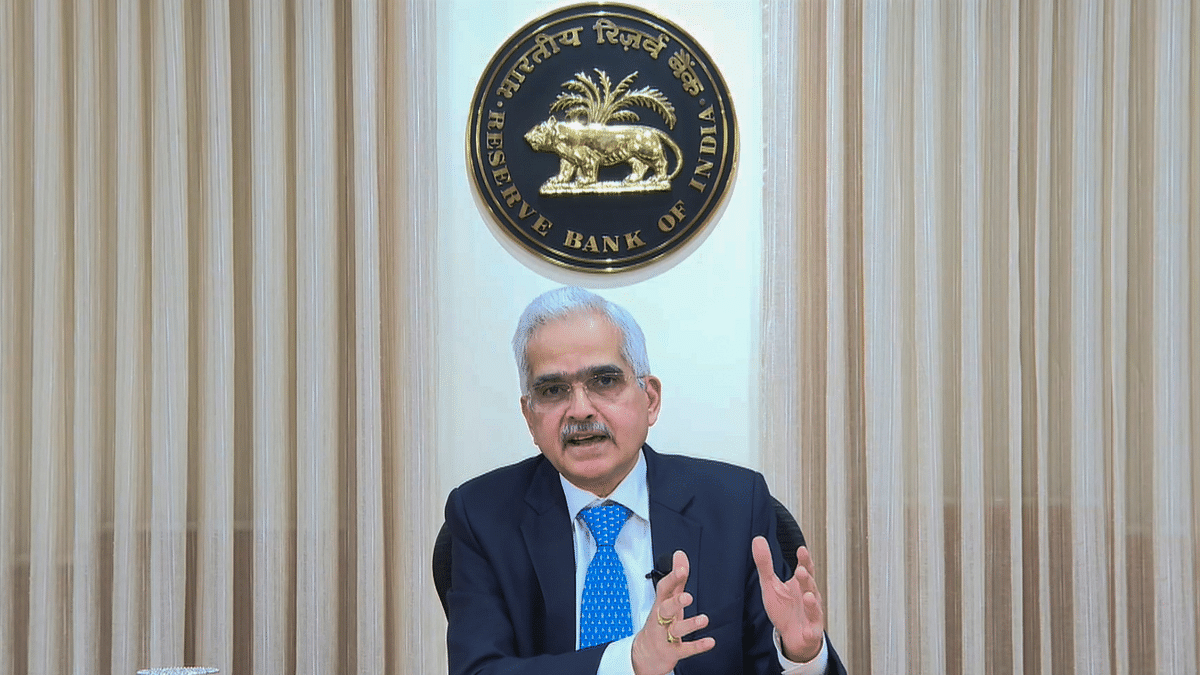New Delhi: At a time when several policymakers and prominent economic commentators are weighing in on either side of the debate on whether India should focus on manufacturing or on services to drive its economic growth, Reserve Bank of India (RBI) Shaktikanta Das has taken the middle path, saying the country should not choose one or the other but instead employ a multi-sectoral focus.
Das said the potential growth of India’s economy over the next three to four years was 7.5 percent, although he estimated a 7.2 percent growth in the current year. The economy could “eventually” grow by 8 percent, he added.
Delivering the annual lecture at an awards function organised by the Capital Foundation Society (CFS) Sunday in Delhi, Das spoke about the opportunities and challenges facing the Indian economy. A non-government, non-profit organisation, the CFS awarded Das a lifetime achievement award Sunday.
“We need to focus on a multi-sectoral approach,” Das said. “Often there is the debate in the public space of whether India should have a manufacturing-driven growth or a services sector driven growth… For a large country like India, with a diverse economy, with so many sectors and sub-sectors and a 140 crore population, each sector has its assigned role. So, India has to adopt a multi-sectoral approach.”
Das’s comments come when prominent voices such as former RBI governor Raghuram Rajan have criticised India’s overwhelming focus on the manufacturing sector and the “stepchild treatment” meted out to the services sector. However, ministers, such as Finance Minister Nirmala Sitharaman, have hit out at such commentary, saying India “must increase” its manufacturing.
Raghuram Rajan has argued that India’s “greatest potential” lies in its human capital.
“India has 300,000 chip designers, even though the country does not produce a single chip,” Raghuram Rajan wrote in an article in Foreign Affairs in May this year. “Such activities now employ 3.2 million people in India and, according to a recent study, generate $121 billion in annual revenue for the country.”
“An economy led by services exports would follow a very different path from the manufacturing-led-exports path the government desires,” Raghuram Rajan added. “But the world has far more room for the former. A service-providing India would also be more sustainable for the climate than an India competing to make global manufactured goods cheaper.”
Nirmala Sitharaman, on the other hand, has shared that India needs to increase its share in the global manufacturing value chain.
“I also want to underline much against the advice given by some economists that India should no longer be looking at manufacturing or ramping up manufacturing,” Nirmala Sitharaman said during a speech at the CII Annual Business Summit in May this year. “I like to highlight the fact that manufacturing must increase. India must also increase with the help of policies its (manufacturing) share in the global value chain.”
Nirmala Sitharaman added that doing so would help India become self-reliant and be in a position to take advantage of the post-COVID global shift away from relying solely on China for manufacturing.
While pushing for a multi-sectoral focus, Das added that the economy’s reform momentum must continue. He said that reforms, such as the Production-Linked Incentive (PLI) scheme and the One Nation One Product (ODOP), had already been implemented in the manufacturing sector. The services sector, he said, “is an area where I think Indian entrepreneurship is at its best”, citing the example of the Global Capability Centres that are being set up in the country..
“Now we need to continue with more reforms, particularly more factor reforms,” Das emphasised. “Reforms in land and labour, and in agricultural marketing to improve the income of our farmers.”
On overall economic growth, Das said that the Indian economy was stable and resilient at a time when global growth was slowing, and the drivers of growth were shifting from the developed economies in the West to the developing ones in the East.
“As things stand today, the potential growth — the rate at which the Indian economy today has the potential to grow — is 7.5 percent,” he said. “This year, our estimate is 7.2 percent, but the potential growth, if you look at a medium-term horizon, let’s say for the next 3-4 years, is 7.5 percent.”
“And this I am saying in a measured and conservative manner because, eventually, the Indian economy can grow at 8 percent, but today, I would like to stick to 7.5 percent potential growth,” Das added.
The governor’s medium-term growth assessment comes at a time when other economic commentators, such as Axis Bank chief economist and part-time member of the Economic Advisory Council to the Prime Minister, Neelkanth Mishra, have said that a trend growth of 8 percent “looks unlikely” and that the more realistic number would be 7 percent.
(Edited by Madhurita Goswami)
Also Read: Chemistry of curd to physics of paratha, GST rates on food are a multi-disciplinary tangle

